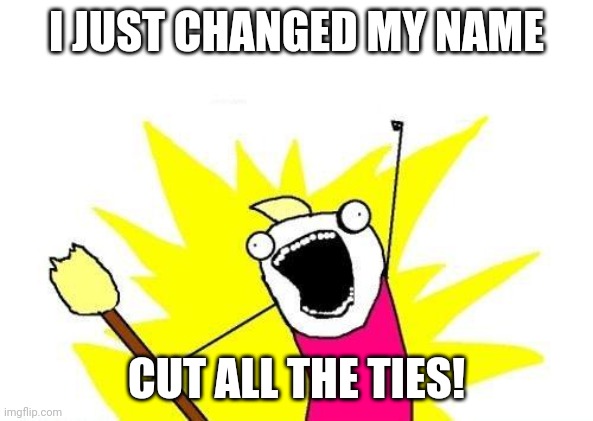So much software.
The problem is, the target audience is so niche: CLI users, developers, people who value shallow dependencies, heterogenous environments, and localism. Not by any means unique or even rare, but certainly a minority. And I hate marketing and self-promotion, so it makes it difficult for me to even post release announcements.
Luckily, I’m mostly scratching my own itches, so userbase size isn’t important, but knowing that at least a few other people are getting value out of my work would be nice.
Ima clarify that: large userbases are a royal PITA. Yes, there are benefits, but the sense if obligation can be oppressive, and it’s hard to find ways of saying “no” nicely.
I relate. Marketing myself feels like lying at best, or trying to get people’s money at worst. I wish I could just say “hey I made this thing, i hope it helps in some way” without putting a price tag on it.
I mean… that sounds like open source?
Yes, but it’s that act of self-promotion that is the issue, not whether you’re charging for it. It can be almost worse for OSS, because users can be astonishingly critical, demanding, and insulting about something you’re giving away for free. If I was charging for it, I would be less offended, because they’d have some justification for being irksome.
Promoting your software still feels like sales, somehow - that’s growing up in a capitalism, I guess, plus you’re opening yourself to all that criticism.
I can relate. I wrote an insanely good optimiser for the loading of data to the trading platform for a major fund management company and there are like… 2… people in the world who know and appreciate
What software have you made? Sometimes people make me feel crazy when I tell them it’s bad to have deeply nested dependencies. Often I’ll dismiss a library if it depends on other things. I think the software world is rife with the idea that “if it works now, then my job is done”.
Thanks for asking!
I work on a variety of projects. Most are in Go, but I could have used Rust if I liked it more; they both tend to compile statically linked stand alone executables.
Most relevant to the discussion is Claptrap, a flags library for Go that has no external dependencies and could be imported into a project my copying one file and changing the package. I deal with added functionality with additional, optional, packages that can be imported to add features like conf file support, env var support, man page generation, pretty printing, etc. Each package used adds another dependency, but they’re each optional and relatively small, readable (I hope!) and auditable. I wrote Claptrap after changing flags libraries something like 5 times with each new project because there was something I didn’t like about the last one I tried. I even did an analysis of dependencies and code complexity on about two dozen different popular options.
Then there are a bunch of little tools I use daily. One’s Legume, which is a distributed ticket tracker based on code comments. No external db, no external service, relies entirely on standard code commenting conventions developers have been using for decades. Again, single executable, and it’s pretty fast. It’s not the first such tool, but I think it’s the best.
I have several other little tools I use daily. I have what I think is a really nice set of scripts and zsh functions based around todo.txt files. The main one is tdp, which provides a bunch of functions for doing executive lists, accessing special todo files more easily, and interacting with then through fzf; that may be the set of tools I use the most throughout the day, but it’s not really packaged for release or especially well documented. I rely heavily on todo.txt.
I wrote a keep-a-changelog generator for Mercurial projects. It’s not as fancy as git-cliff, but it does the job.
I’m the maintainer for gotop since the original author abandoned Go for Rust. I’ve not been spending a lot of time on it because it needs a refractor and I haven’t found the energy for it, and there are so many good alternatives. That project is all dependencies, so nothing minimal about that.
There’s a really rough TUI SMS chat app I’m writing called dsms, because I hate communicating on phones. It relies on two programs to be running on your Android phone, because there’s no app that both forwards SMSes and allows sending through an API call, so it’s kind of a pain and nowhere near ready for primetime.
And I recently wrote a CLI tool called dvalv for encoding and decoding files encrypted with the Android app Valv (which I _didn’t_write), so if you SyncThing your Valv directory to your desktop, you can decrypt and access your files there.
And I have a really obtuse, byzantine set of tools for taking a resume.json file and generating Word, ODT, HTML, Markdown, and pdf (via Typst) output, via a couple of different templates. The projects unimaginatively called “resume”. That’s entirely for myself, but it someone wants to use it, I’d be happy to walk them through the process of getting everything set up to do so. It uses a couple of very nice templates that I patterned after a couple of professional career councilors. The repos isn’t up to date; I need to push some changes, but since I’m positive I’m the only user I haven’t made it a priority.
A tool I’m extremely happy with and use maybe even more than tdp is rook. This one I did announce on Lemmy. It’s a sort of headless secret store backed by a KeePass DB, and it’s one of the most useful tools I’ve written recently. Rook’s in both AUR and Alpine testing.
There’s a little busybox-compatible Lua script for DD-WRT routers that’ll shuffle and pick a VPN exit node from ones stored in the router; I use it to hop my exit node once or twice a day via a cron job. I use Mullvad and there script might have some assumptions built-in that won’t work for non-Mullvad accounts, but it’s not exactly rocket science.
I forked a lightweight, pure-Go DB project and did some substantial modification, and called it leaf. These sorts of DBs are a dime a dozen, but this fit my needs, which included being usable on programs cross-compiled for mobile devices.
What’s taking all my time lately, though, isn’t my project. I’ve been doing a lot of work on stmps, which is a hard fork of stmp, which is a Subsonic TUI client. I’m doing things like adding album art and synchronized lyrics support, bug fixes, and so on. My dev branch there is called “xxxserxxx”.
All of these are actively developed, if not necessarily getting a lot of commits. I fix bugs as reported, and make improvements as needed.
Here’s a full list; nearly all my projects are on Sourcehut.
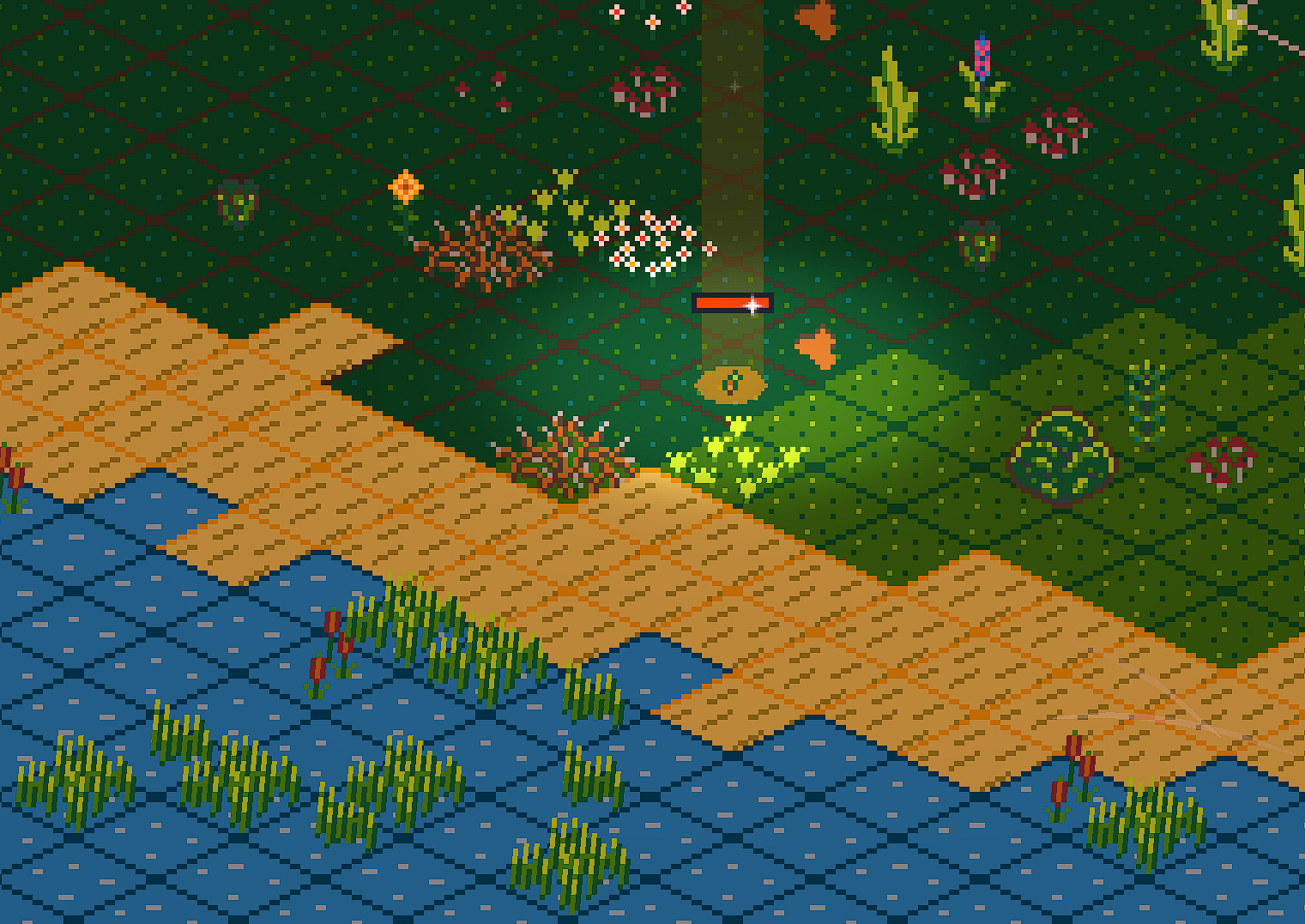
I’m developing my first vidyagame, an RTS Clicker survival where you have to grow to be the largest organism on the planet, called Infinitree. Steampage going up in February, prototype is going out to F&F this month. Check out The Infinitree website for more info :-)
I furnitured!
I built this planter box, along with one three times as long as this one, out of cedar
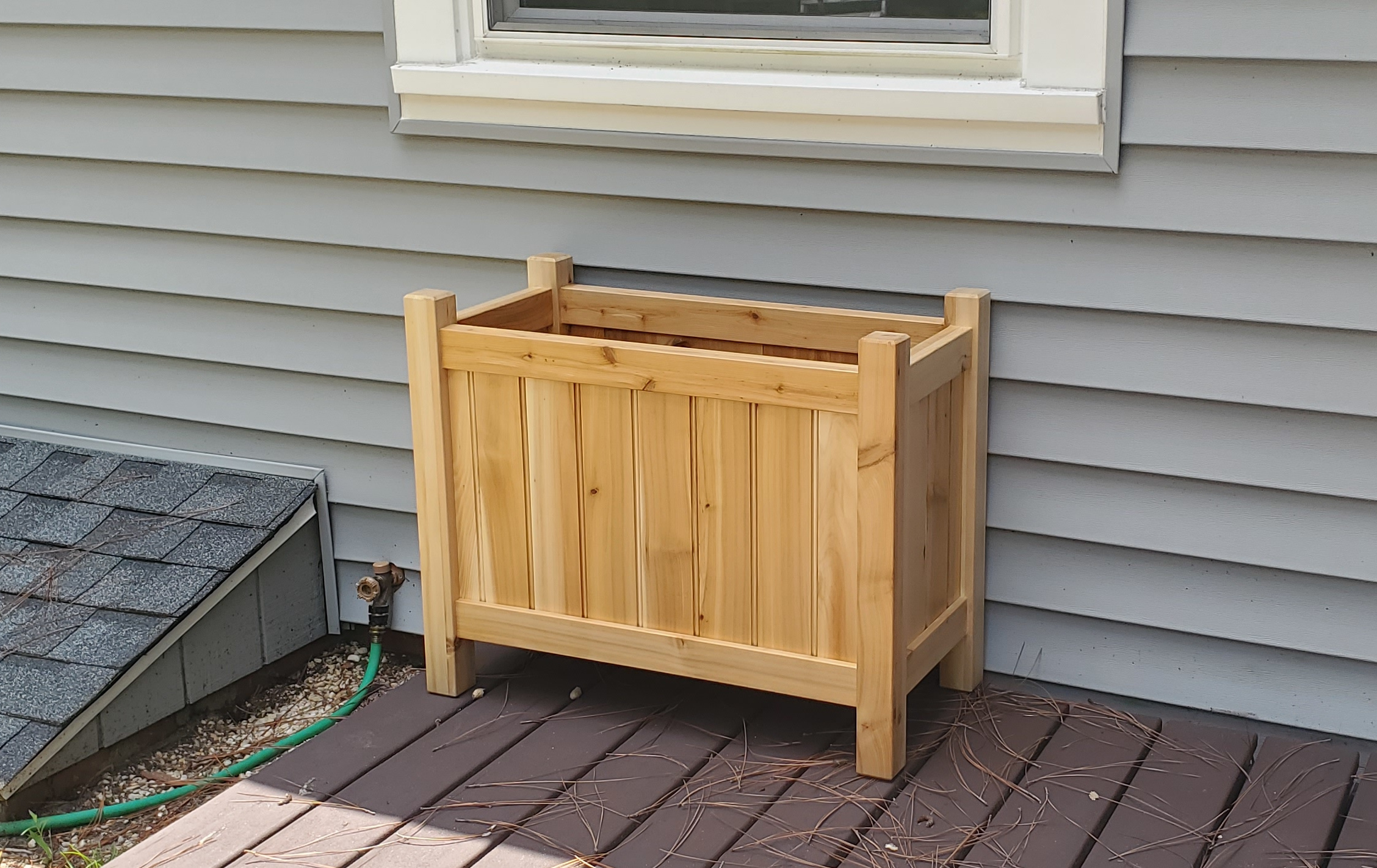
This little table for my porch out of some lovely local white oak. It’s a humble little thing but I’m rather proud of it because it’s the first project I made with genuine mortise and tenon joints, some chopped by hand with a chisel.
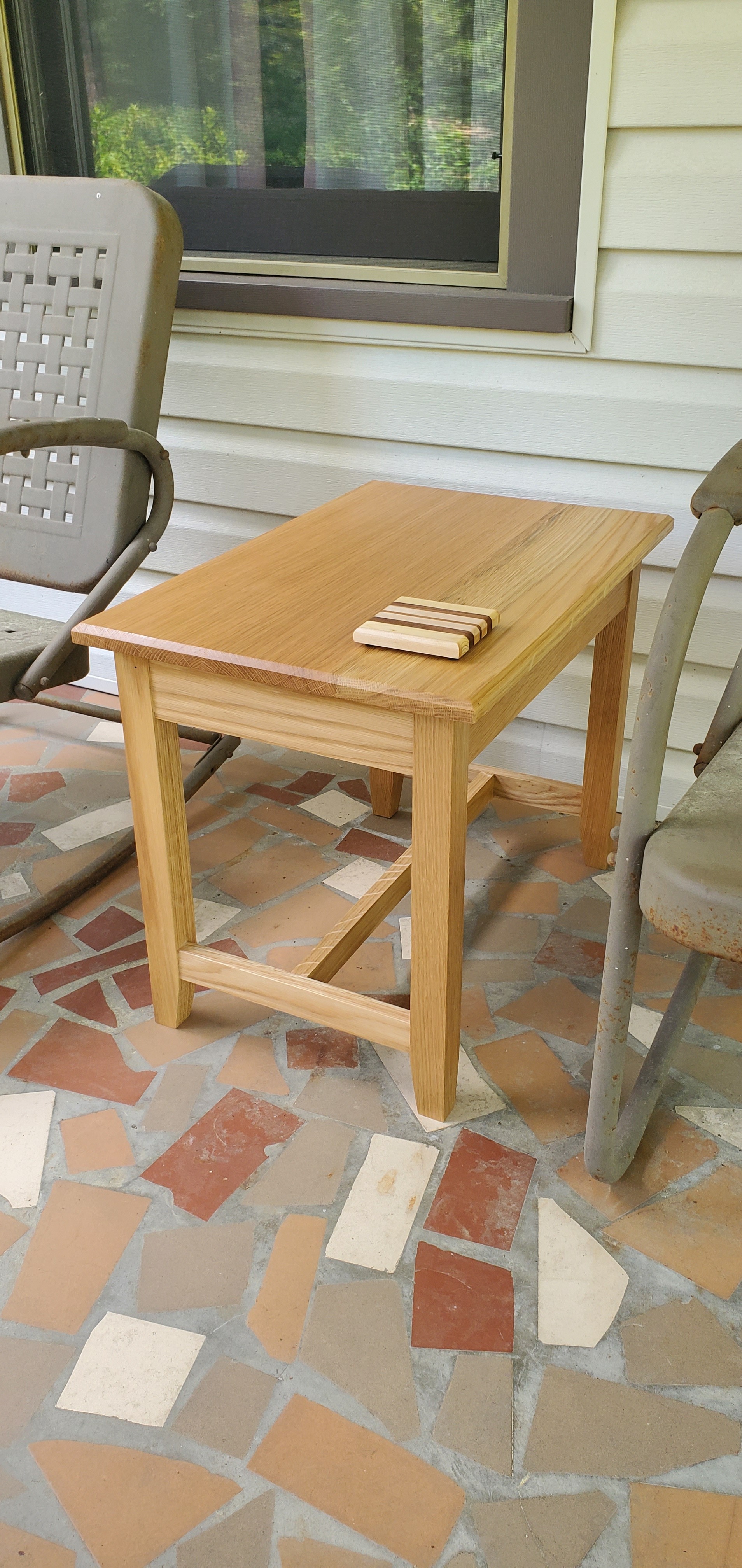
A plant stand, also out of white oak. This one has slanted and tapered legs, and Avril Lavigne wrote a song about it. Why DID I have to make things so complicated?
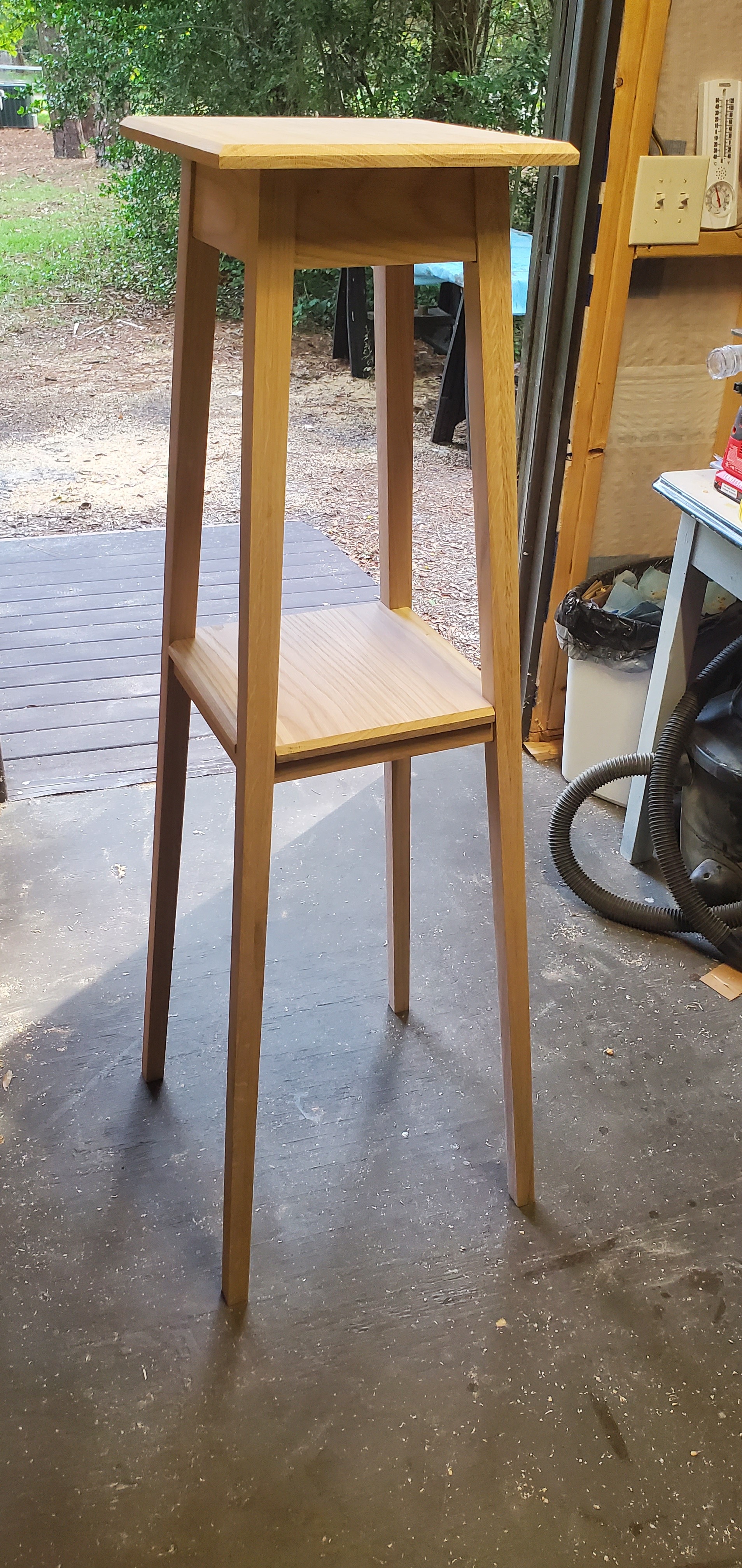
And two bookcases from birch plywood and white pine. I was particularly careful planning this one, and managed to get the carcass and shelves of each bookcase out of a single sheet of 3/4" plywood, though it does mean the grain direction on the fixed bottom shelf doesn’t make sense.

You’re really good at carpentry, Internet stranger!
Thank you.
Dope af. Good job on the fabrications.


I’ve put together two servers for self hosting a lot of services for myself, rather than relying on platforms that continually get worse.
The one on top, a retired Datto backup machine, hosts TrueNAS scale with a bunch of different services (Pihole, Jellyfin, Immich, etc.) and our network shares. The bottom one, Dell PowerEdge R620, runs Fedora server. I plan to use it for locally hosted game servers, but it just runs Minecraft (AllTheMods 10).
I’ve used knowledge I’ve gained in the IT space to set up the networks, and even have a VLAN running for an Ubuntu server VM of which I host for a coworker to learn on.
I make music, including putting it to video every once and awhile. So technically “music videos,” I guess. I don’t share them all that much, but here’s a weird one I’m kind of proud of.
Dang, that’s creepy and I like it. Nice work!
Thank you!
“once in a while”
Doesn’t make a lot of sense but that is the correct phrase.
Best RC evar, don’t fight me, fight my son he did the awesome styling
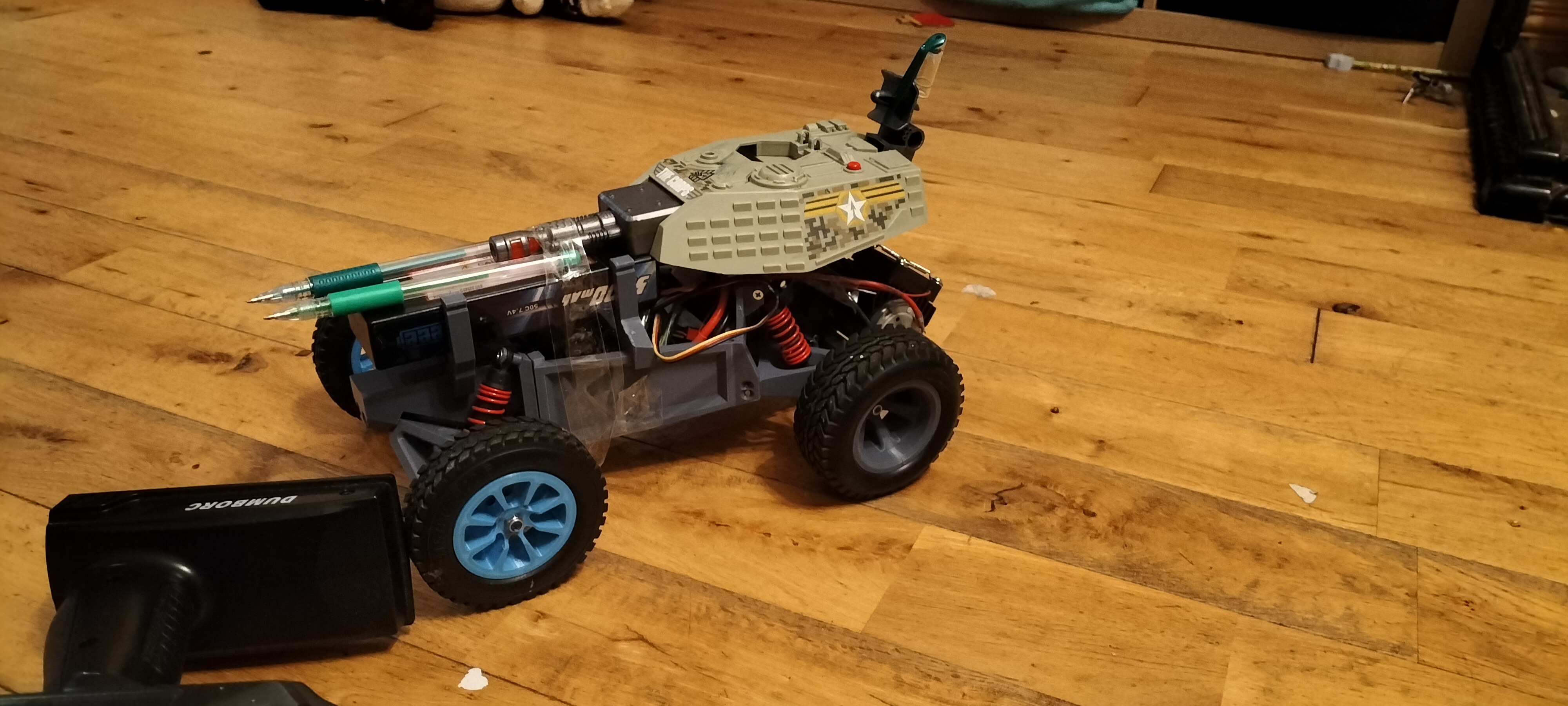
Does art count?



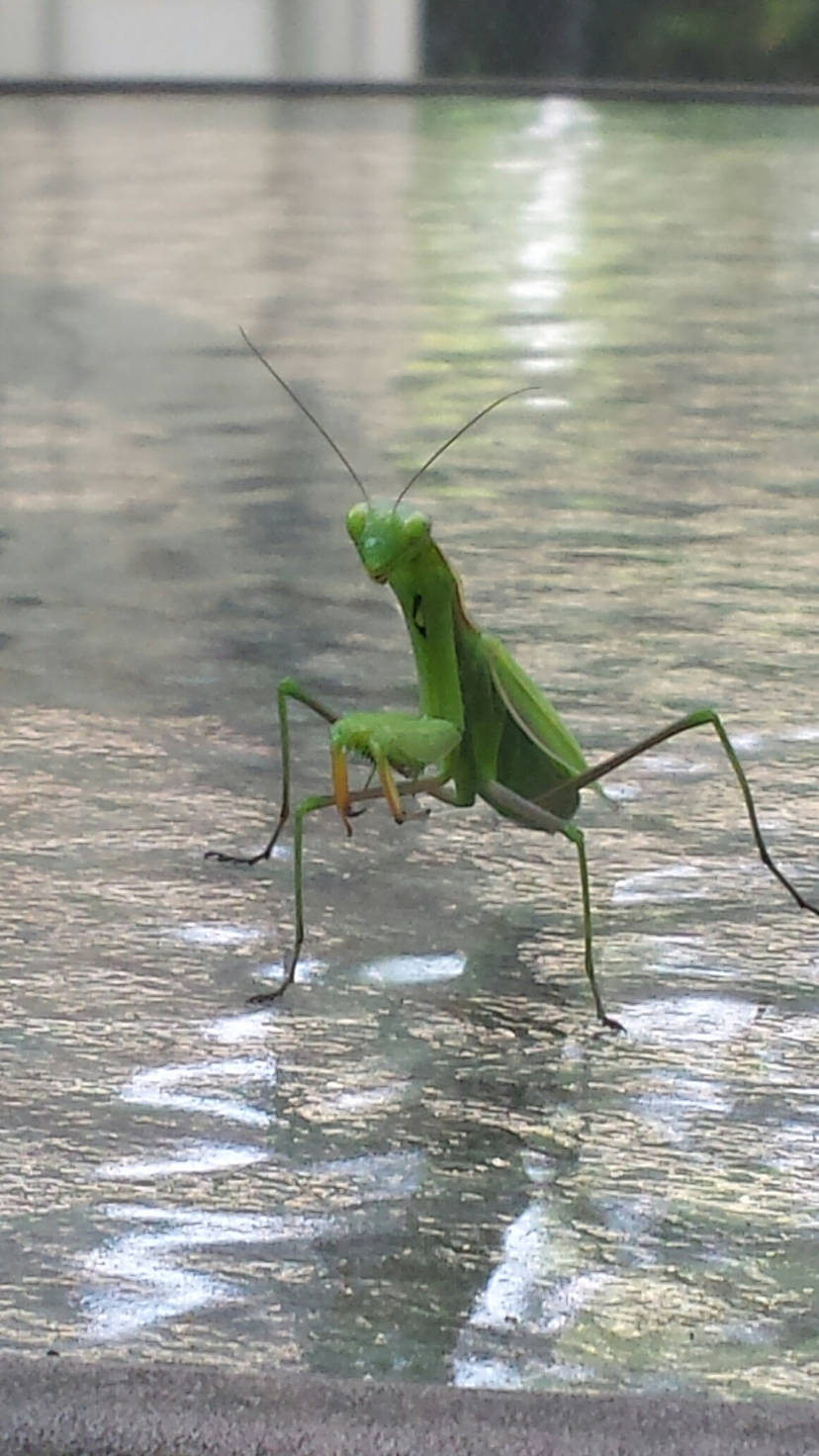






I like the second drawing with the motion of the wind and the pillars! Nice photos too! 😃 Forest one is such a vibe
Thanks.
Interestingly enough the one with the wind is based on a dream I had. It may be why it came out so vivid.
For a second, I thought that was a shell casing next to the frog. Which, admittedly, would have made for a more intriguing narrative.
You mean the acorn shard or the piece of stick?
I’ve similarly been told before it looks like the frog is smoking or chewing on the blade of grass.
The piece of stick. Though I couldn’t so positively identify it, hence the momentary confusion!
I made my own, single source bubble hash live rosin, from seed to final product, all by myself and it came out the best I’ve ever done.
I don’t really have anyone to share it with who would understand and I don’t know if any of you get it either, but I’m super happy with the end result and proud of all the work I did.
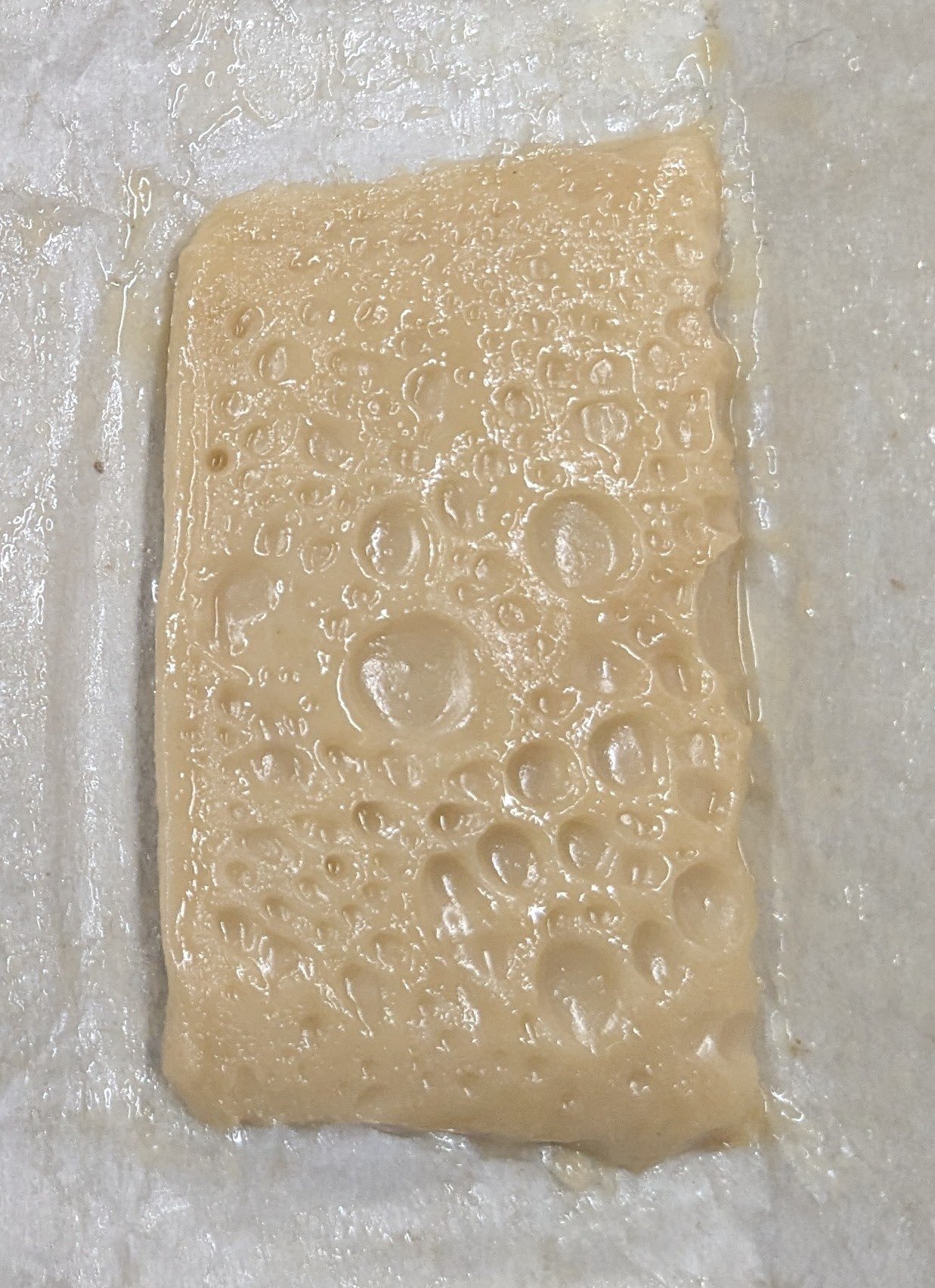
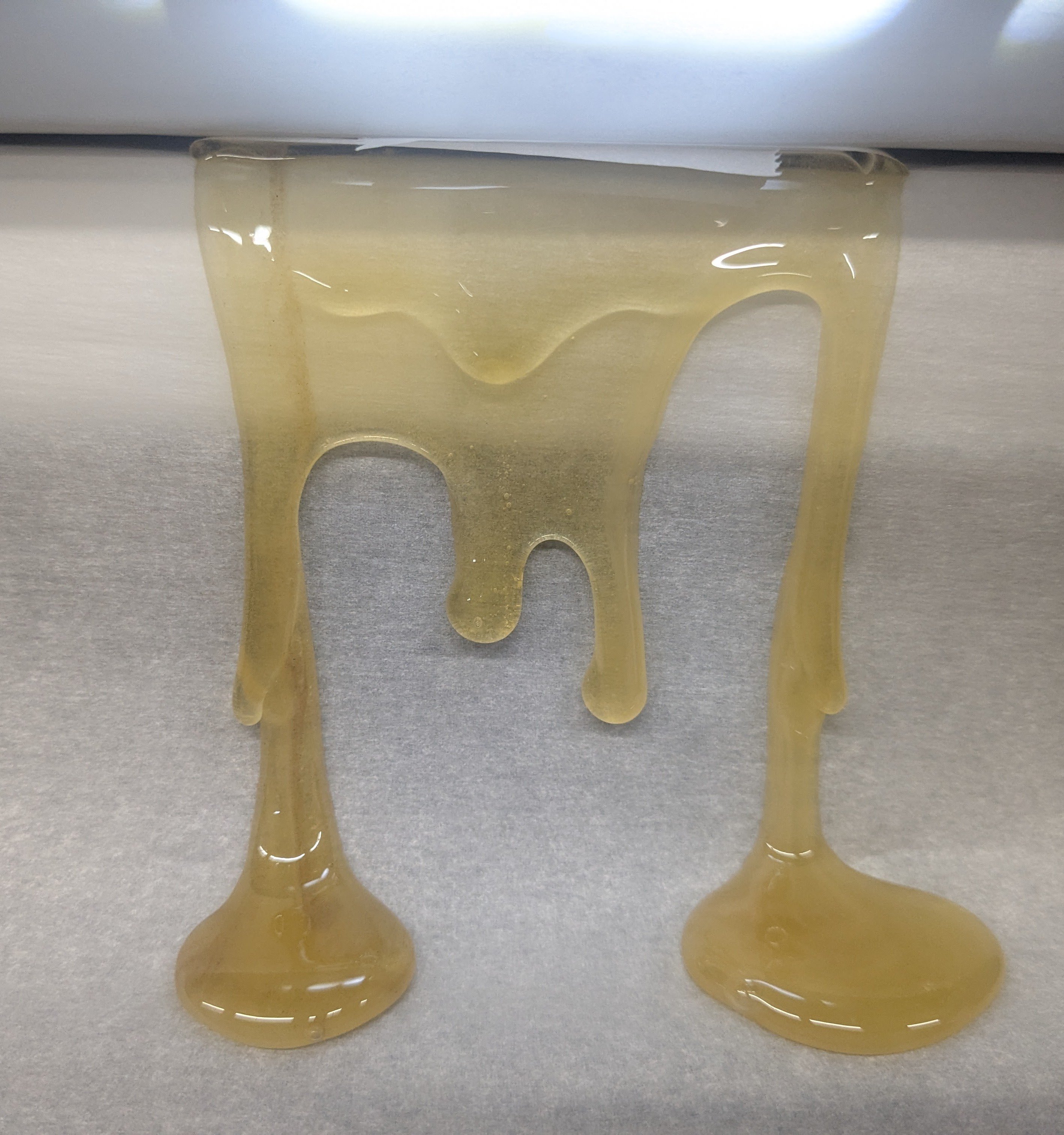
Looks great, I bought a press recently, but trying in shake I have decided I need to grow my own plant to do that and get good results. I was thinking about doing it, but seeing what you got out in now more motivated to get that done this year.
The hardest part is starting my dude! I highly recommend trying to grow at least once. It’s a lot of time and effort to grow it, harvest it, turn it to bubble hash, and then press it into rosin, but I find it very rewarding, especially now that I’m making decent product. You can also apply a lot of what you lean growing cannabis towards growing food crops like tomatoes and corn.
Looks like good work
Looks delish mate, good work
I am a developer for a free open source game inspired by Minecraft called VoxeLibre, I have also made one of the more popular mods for it.
Development is a collaborative effort between many people so I cant call the game mine. I didn’t create it. But ive been contributing on and off for a few years trying to do what I can to improve the project. So in a way it feels like I’m at least part of the legacy at this point. I am proud of how far the project as a whole have come and proud of the talented people I have the pleasure to collaborate with.
It started almost three years ago with simple typo bugfixes. I did not know anything about coding or pixel art making or git commits but liked it enough to learn through hard work and effort. Its been quite the ride ever since!
I play your game everyday! I’m going through a lot in life right now and this game helps me to relax and breathe between all the chaos.
If anyone is interested, it’s available through Luanti.
Thank you so much for making my life a little more bearable❤️
Edit: changed name from Minetest to Luanti
Just for context, minetest was recently renamed to Luanti, which is why the website url and downloads say that.
Around a year and a half ago I started making my own keyboards. Like, I still use normal switches, normal keycaps, and off-the-shelf microcontrollers & firmware, but the layout and the structure are my own design, mostly fabricated at home. After a few experiments (one ortho, one ergo, one macropad, and one gutting of a broken off-the-shelf to try something larger) , I had three keyboards’ worth of aluminum plates made. One was pretty basic but has remained a favorite and another really hit my retro intent for the design, but the second was sort of an ignored middle-child because it wasn’t as refined as the third, or as earnest and satisfying as the first. I fixed it by designing a wrap-around case for it, changing the keycaps, and adding a little solenoid so it sounds like a telegraph machine whenever I flip a little switch. I’m really pleased that I was able to retrofit it to make it stupidly fun to type on. My boards are not exactly the perfectly-finished CNC aluminum showpieces some enjoy, but it’s deeply satisfying to go from a pile of electronic bits, some sheet goods, and a reel of printer filament, to a functioning piece of daily-use equipment.
pics


More pics! Love the yellow and gray builds.
Thanks! They’re the twins of the one I just spruced up. The gray one is bare aluminum with oak spacers. Construction wise, it ended up looking a LOT like Matt3o’s BrownFox from like ten years earlier. No surprise, I suspect. The Swill plate generator I used was likely borne out of people wanting to do similar projects. It has Box Navy switches combined with Vortex-designed VSA keycaps that you can find mislabeled all over ebay/AliExpress/etc. as “double shot DSA”, except for the BBC Micro inspired F row, with is just 12 red DSA blanks and one that I lasered a design onto.
pic

The yellow one has “Fauxly Panda” no-name heavy tactiles from Aliexpress, a 3-D printed case and feet, Akko “SA-L” keycaps, and a design (very) loosely inspired by the later Atari 8-bits. The color scheme is meant to sort of vaguely evoke the original 400 and 800. I am really pleased with this layout, which is just a TKL with the F-row shoved over, a few missing keys above the nav cluster, the Shifts split in two, and the modifiers shrunk down and reduced to give that “dangling spacebar” look so many old keyboards have. Only thing I’d do different is not split the left Shift. I just never got used to having two keys there, so all three boards now just map shift to both keys.
pic

This has been an immensely fun hobby, and I’ve probably done a dozen projects by now, though I’ve probably topped out how refined my designs can be and still be fabbed on a 5W diode laser and an Ender 3 clone. Last project before the solenoid and aesthetic retrofit was my goofy no-stabilizers Battlecruiser, which I’m currently using for work.
This looks awesome man. You got any with numpad?
Oh hell yes, the compact layouts that keep their numpads are my usual preference, though in adding numpads I also decided to do my own plates on my home laser, and that was easier without longer keys, so they got a little… weird.
- First one. Did my own (slightly cockeyed) legends on the keycaps.
- Second one. F Row returns. Tried to make a case that fit the weird layout. More DIY legends.
- Third one. Tried to do a southpaw and minimize the need for custom keys, though it still benefits from a few.
- Back to F-row-less. Careful selection can make this work with purchased caps. It also has a PCB, though the microcontroller is just manually wired instead of being integrated or even socketed.
- HEHEHEHEHEHE.
- Bonus. Numpads don’t have to be part of the board.
I did not realize I need a lefty numpad.
I’m not a lefty, but as an accountant, it’d be great to use my mouse without taking my hand off the numpad
They’re really more for use cases like yours and for gamers who want/need one but want to keep their mice close in. As with most well-known layout concepts in the hobby, Keychron sells some. I found it to be… fine, but obviously mine has more compromises than usual. I mostly use one of those smaller ones that still has a right-hand numpad (typing on the F-Row-less black and white one now), or I keep that external numpad to the right of my mouse.
Thanks, I might check that out. I just got my first mechanical keyboard for Christmas and am loving it. I wonder if I can talk work in to buying me a lefty one.
A very overdue Christmas themed drawing that I’m not finished with just yet. So here’s some fluffy tinsel I just got done with rendering!

Cool. But, where the tinsel?
So many things!
We moved to a new house a couple of years ago and I mapped out the whole property, put it into LibreCAD, designed the space, and have been planting/building it since then. I now have thousands of plants, over 1000 unique types, and a vegetable garden in our 1/3 acre lot. I’m very proud of it, but don’t really know how to best share it with the world (or if anyone cares).
I also have a web site that I’ve been building forever, lots of little programs, things like my irrigation system built from a Raspberry Pi, my homelab, all of the plants that I start from seed in the spring for the garden (thousands under grow lights with heated mats), the hydroponic system… I’m sure there’s more.
SMH…I love it, but really? 😆
Ha ha ha, ye, practical it is not! In my defense, it started as trying to solve a real problem I was having. The keyboard doesn’t have a capslock/numlock indicator, so I had the idea of using the backlight as an indicator.
Got that running, but I was having fun so I decided to make a little snake game
Showed that to a friend who made the usual joke of “ok yeah, but what about doom?”
I knew it was going to be unplayable, but I’ve never actually put doom onto something weird before and it felt like a rite of passage, so I thought why not. It was surprisingly easy! Only took an hour or so thanks to doomgeneric
Delightful
Is any piece of hardware safe from doom?
This is my thesis as to why the Brazilian Electronic voting machines are fairly safe from hacking and vote manipulation. We have never seen one running Doom in the wild.
Fucking amaaaazing!
I know it’s not much compared to everyone else’s stuff here but it’s the easiest to post since I actually have picture of it.
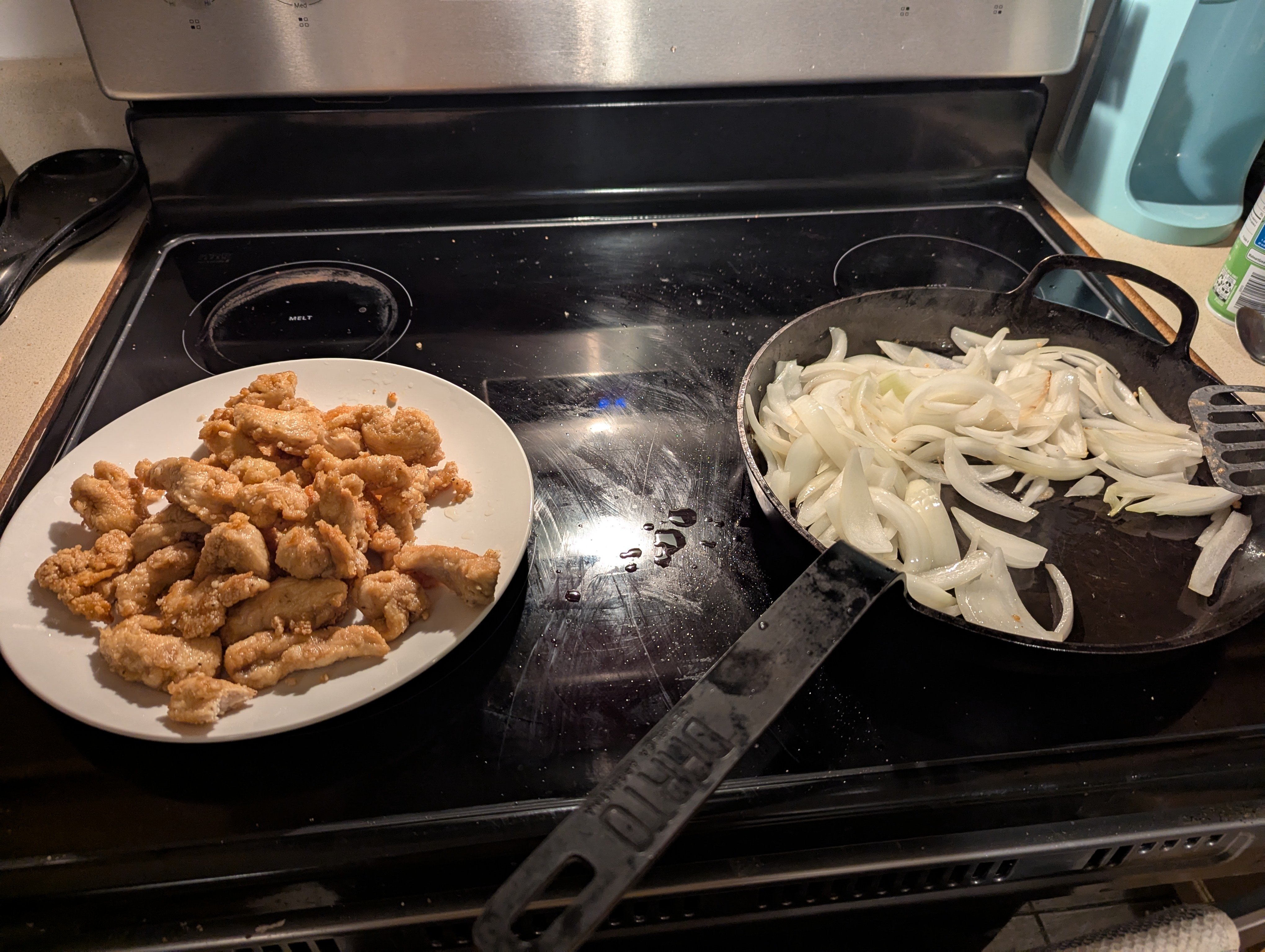
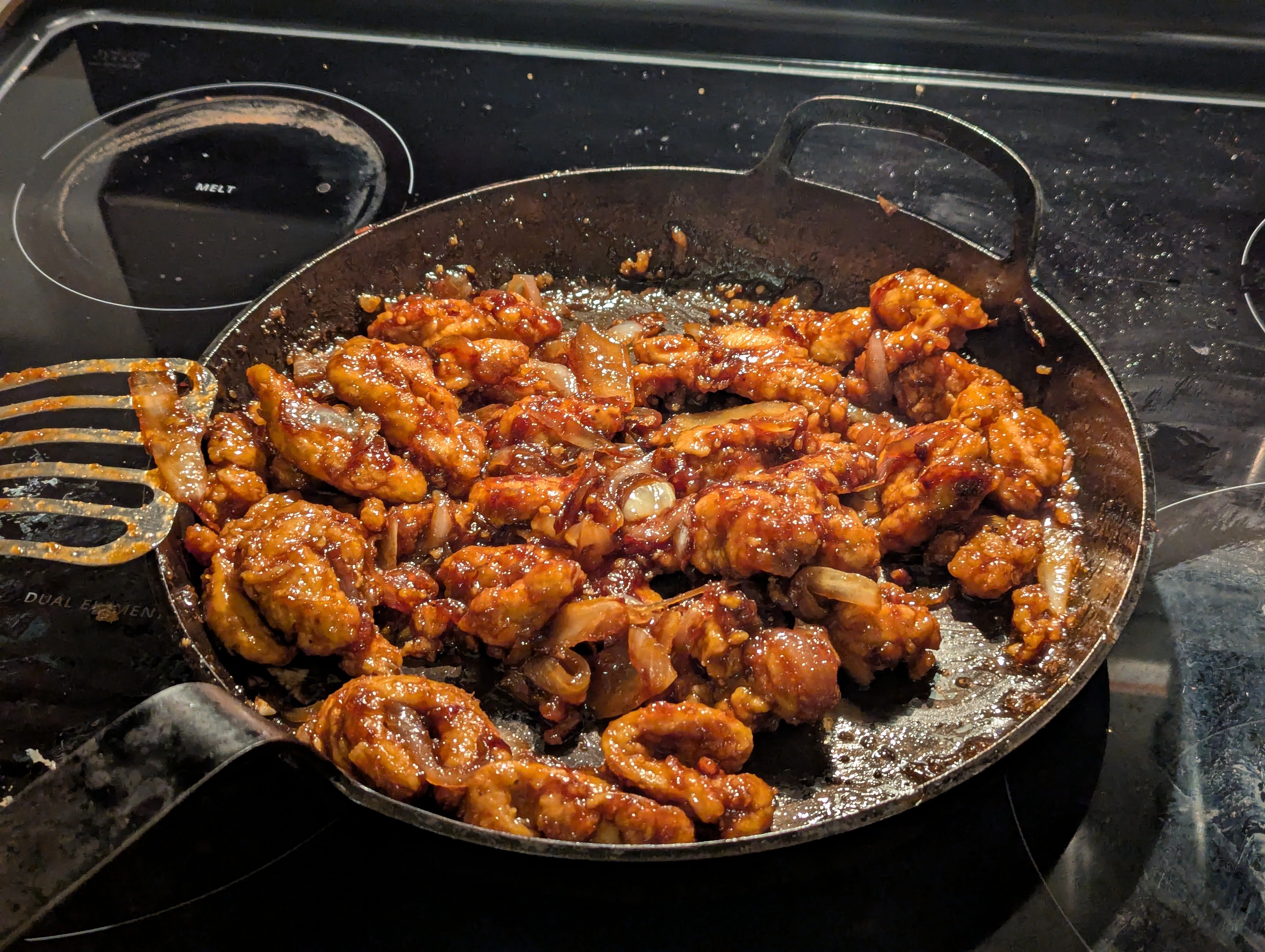

Made some ginger chicken after experimenting with making the chicken tender and crunchy without deep frying. Turned out very good.
That looks awesome and makes me hungry.
Ginger Chicken
Preparing
Cut some chicken up into strips a bit under 1cm (0.4in) thick and against the grain if using beast (more of a thigh guy myself).
Put chicken in bowl and wet chicken with equal parts rice vinegar and soy sauce. I used around 1.5 (22.5ml) tablespoon rice vinegar and 1.5 (22.5ml) tablespoon soy sauce for around 0.6kg (1.3lb) of chicken. Hand mix the chicken until the vinegar and soy sauce are worked in.
After around 5-7 minutes, the chicken should soak up the vinegar and soy sauce and leave little to no liquids.
Add in about 1.5 tablespoon (22.5ml) of shaoxing wine and enough corn starch to turn the liquid into a thick-ish white liquid but not enough to dry it out. It should have roughly the same consistency of an egg white. Once it’s hand mixed, put in some black pepper and sprinkle a little bit of MSG if you have any and mix it again. For pepper I put in around 1 tablespoon (15ml). For MSG, I used what I could grab with my fingers which would be like 1-2g.
After doing that, chop up a sweet onion into crescent moon shaped slices and set it aside.
Let the chicken marinate for about 30 minutes.
Prepare the sauce
Go in with the mindset of making teriyaki sauce.
Mix together:
- 5 tablespoons (60ml) of soy sauce
- 2 tablespoons (30ml) of brown sugar
- Three microplaned garlic cloves (~1 tablespoon, 15ml)
- 2 tablespoons (30ml) mirin
At the end, fuck up and add 1 tablespoon (15ml) of ginger powder instead of the 1 teaspoon (5ml) you were supposed to add.
Now you have ginger sauce.
Cooking
Get large carbon steel or cast iron pan (stainless might work but I’ve never tried it since I don’t have any. Non-stick will not work) and fill it so there’s about 2mm of vegetable oil in the pan. Pre-heat at low-medium heat.
Before putting in chicken, coat the chicken in a layer of corn starch, kinda like breading it. It should feel dry and not sticky after coating.
Prepare about 1 tablespoon (15ml) of butter in a spoon (or butter knife or whatever, you’ll be quickly throwing it into the pan while cooking) and have a clean plate large enough to hold the cooked chicken ready.
Pre-heat until oil is just starting to emit thin wisps of smoke then turn heat to medium high the dump chicken in the pan and keep it moving until the outside is browned then throw in the butter and stir until the butter evenly coats the chicken and then cook it for about 20-30 seconds more while constantly stirring it.
Remove the chicken and put it on a plate using a slotted spatula to limit the amount of leftover oil and butter from soaking into the chicken and making it soggy.
Put in sliced onions and stir fry until decently and evenly browned but not charred.
Turn heat to medium, add back in the chicken, then pour in the sauce and keep mixing until the sauce thickens and sticks and soaks into the crust of the chicken.
Best enjoyed with some fried eggs and rice.
A podcast called Almost Plausible, where a couple of friends and I take an ordinary object (such as a ceiling fan, a paperclip, or a toilet brush) and we create a movie plot based on that object.
You can find the show anywhere you listen to podcasts.
Listening now on Spotify 👍
Hooray! I hope you like it. :)
